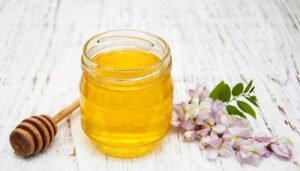Royal jelly is a substance produced by worker honeybees to feed and nourish larvae and the queen bee in a hive. It is a secretion from the glands in the heads of worker bees and is rich in nutrients, including proteins, vitamins, and minerals. Royal jelly plays a crucial role in the development and differentiation of honeybee larvae, especially for those designated to become queens.
The composition of royal jelly includes water, proteins, carbohydrates, fats, vitamins (such as B-complex vitamins), minerals, and various other bioactive compounds. Due to its nutritional content and potential health benefits, royal jelly has gained popularity as a dietary supplement for humans.
Some claimed health benefits of royal jelly include its potential as an antioxidant, immune system booster, and a contributor to skin health. However, it’s important to note that scientific evidence supporting these claims is limited, and more research is needed to establish the effectiveness of royal jelly for human health.
As with any supplement or natural product, it’s advisable to consult with a healthcare professional before incorporating royal jelly or any other new substance into your diet, especially if you have allergies or pre-existing health conditions.

Worker bees are the most numerous and versatile members of the colony. Their tasks change as they age. Young worker bees clean and tend to the brood (eggs, larvae, and pupae), while older workers forage for nectar and pollen, produce beeswax, build honeycomb, and defend the hive A honey bee colony consists of three main types of bees.







